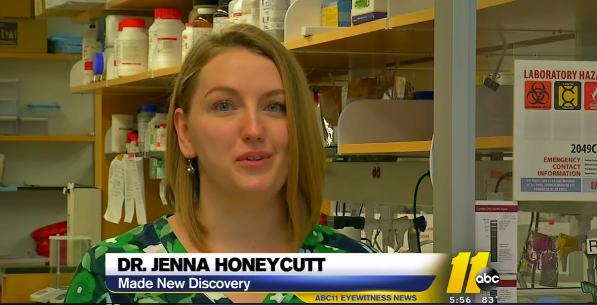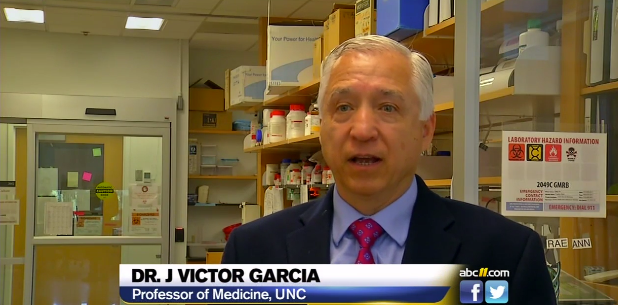Researchers in the Department of Medicine’s Division of Infectious Diseases have learned the HIV virus persists in macrophages, large white blood cells found in tissues throughout the body. The discovery has significant implications for HIV cure research.


Dr. Jenna Honeycutt is a postdoctoral research associate in the Division of Infectious Disease who has discovered that the HIV virus can hide from treatment in ways that no one has yet considered.
Up until now, doctors have treated HIV by looking at one particular type of cell. Dr. Honeycutt questioned whether this was what researchers should be considering. She developed a converse animal model where she could look at everything but T cells and she explained her work in a recent interview.
Talking to ABC 11 News, she described her discovery like playing a game of chess. “If you don’t know how some of the pieces move — or in this case, how the virus truly works — how can you win the game?”
Dr. J. Victor Garcia, a Professor of Medicine in the Division of Infectious Diseases, said the ultimate hope is to find a cure for AIDS.
Information about these investigators and their work can be found at the Institute for Global Health and Infectious Diseases.
An article also appeared in the News and Observer.